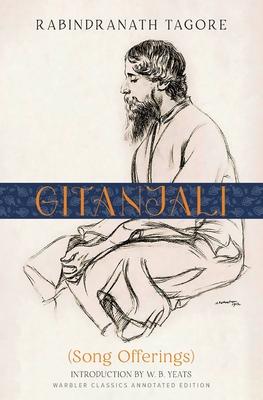Gitanjali, the most famous work by Rabindranath Tagore, was first published in India in 1910. Tagore modeled these poems about love, devotion, desire, and the realization of the divine within on medieval Indian lyrics of devotion. In 1912, Tagore traveled to England with his English translation of Gitanjali, and shared it with English painter William Rothenstein who had visited India. Rothenstein championed the collection and shared it with others. For its publication by the India Society in London Rothenstein provided the frontispiece and W. B. Yeats wrote the introduction. Immediately upon its publication the book earned attention and high praise Ezra Pound, Robert Bridges, Ernest Rhys, Thomas Sturge Moore, and others. Largely for his English translation of Gitanjali, in 1913 Tagore won the Nobel Prize for Literature-the first such recognition of an Eastern writer. Gitanjali is part of the UNESCO Collection of Representative Works and a beloved classic the world over.

Gitanjali (Warbler Classics Annotated Edition)
Gitanjali, the most famous work by Rabindranath Tagore, was first published in India in 1910. Tagore modeled these poems about love, devotion, desire, and the realization of the divine within on medieval Indian lyrics of devotion. In 1912, Tagore traveled to England with his English translation of Gitanjali, and shared it with English painter William Rothenstein who had visited India. Rothenstein championed the collection and shared it with others. For its publication by the India Society in London Rothenstein provided the frontispiece and W. B. Yeats wrote the introduction. Immediately upon its publication the book earned attention and high praise Ezra Pound, Robert Bridges, Ernest Rhys, Thomas Sturge Moore, and others. Largely for his English translation of Gitanjali, in 1913 Tagore won the Nobel Prize for Literature-the first such recognition of an Eastern writer. Gitanjali is part of the UNESCO Collection of Representative Works and a beloved classic the world over.